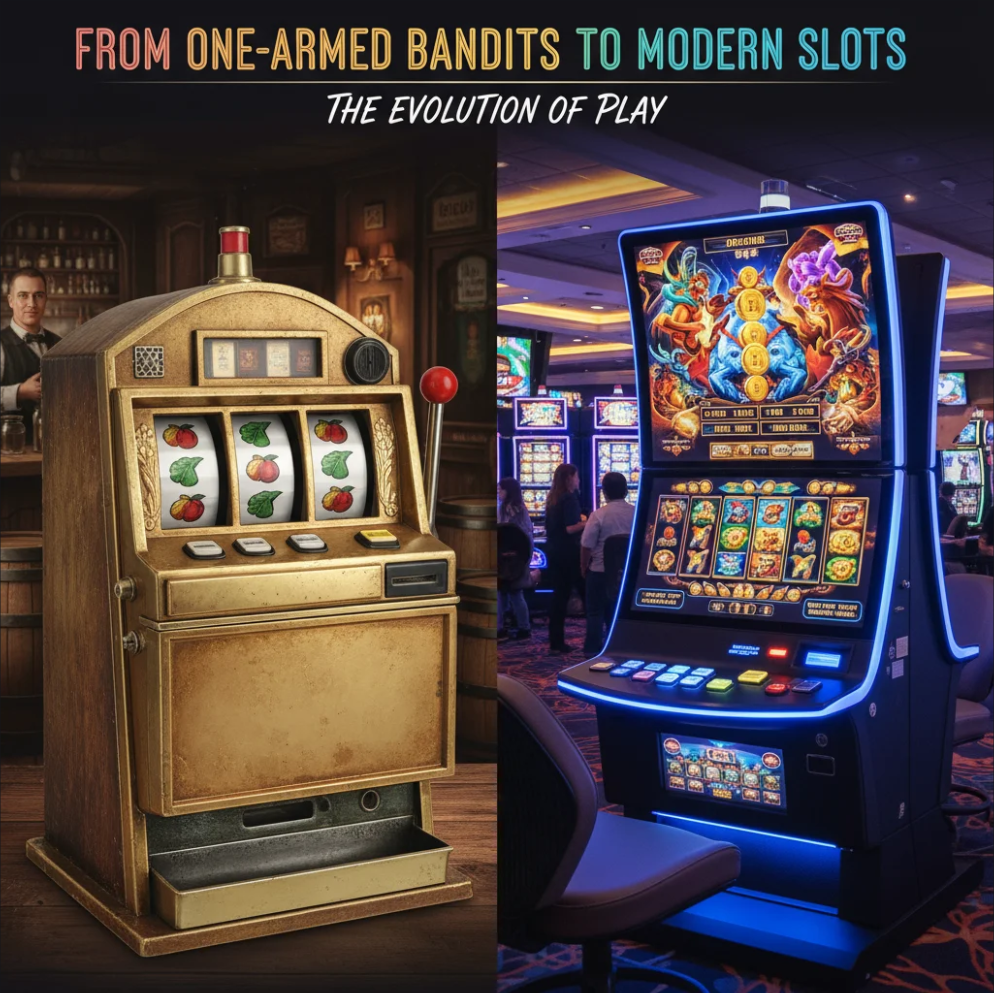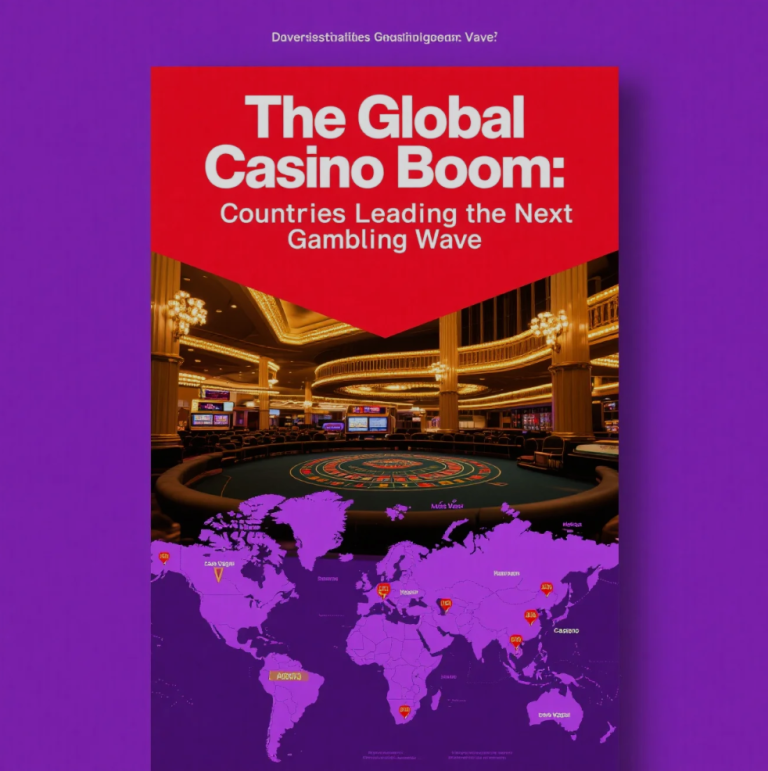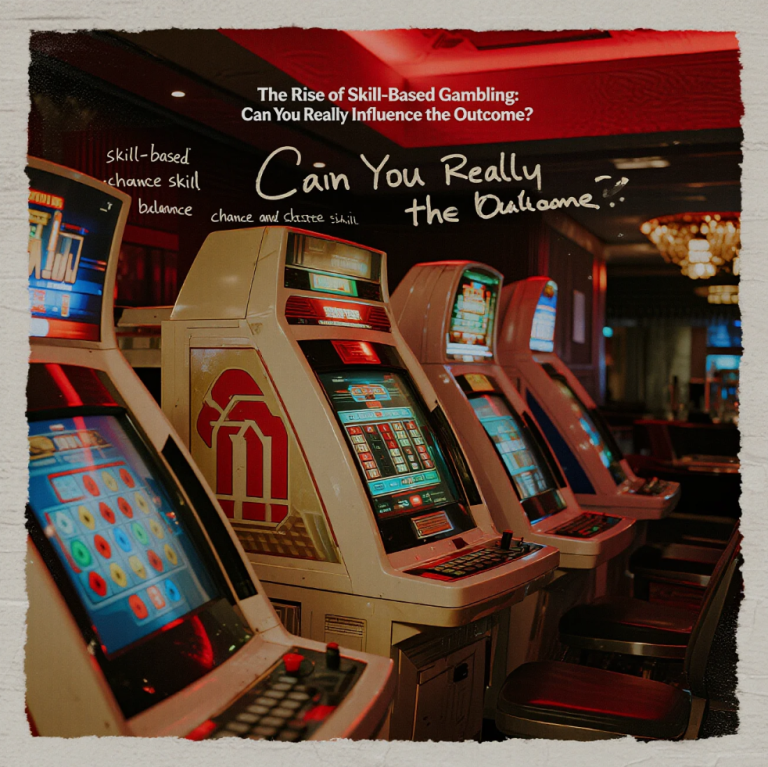
Slot machines are among the most iconic games in gambling history. What started as simple, mechanical devices known as “one-armed bandits” has transformed into today’s digital slot games filled with stunning graphics, immersive sound, and complex features. This evolution reflects not only technological progress but also how our entertainment preferences have changed over the decades.
🔹 The Birth of the One-Armed Bandit
The first slot machine was invented in the late 19th century by Charles Fey, a mechanic from San Francisco. Known as the Liberty Bell, this machine featured three spinning reels and five simple symbols: horseshoes, diamonds, spades, hearts, and the Liberty Bell.
Why “one-armed bandit”?
- The lever on the side allowed players to pull and spin the reels (the “arm”).
- The term “bandit” came from the fact that most players ended up losing money to the machine.
These early machines were mechanical, easy to understand, and became an instant hit in saloons, bars, and casinos.
🔹 Electromechanical Slots: A New Era
By the 1960s, slot machines underwent a major transformation with the introduction of electromechanical systems. Bally’s Money Honey (1963) was the first fully electromechanical slot.
Key innovations:
- Automatic payouts up to 500 coins.
- More symbols and features.
- Faster play and bigger excitement.
This era marked the transition from simple entertainment to a serious revenue generator for casinos.
🔹 Video Slots: The Digital Revolution
The 1970s and 1980s introduced video slot machines, replacing physical reels with digital screens. Fortune Coin Company (1976) created the first video slot, which was later approved by the Nevada Gaming Commission.
Why they mattered:
- Allowed for more creative themes.
- Multiple paylines were introduced, giving players more ways to win.
- Bonus rounds, animations, and special effects kept players engaged.
Video slots opened the door to modern gaming experiences that felt more like interactive entertainment than just gambling.
🔹 Online Slots: Play Anytime, Anywhere
The mid-1990s saw the rise of online casinos, and with them, online slots. These games revolutionized access, letting players enjoy slot machines from home.
Features included:
- Wide variety of themes—from mythology to movies.
- Progressive jackpots with life-changing payouts.
- Multiplayer tournaments and community-driven play.
Online slots expanded the audience far beyond traditional casino-goers.
🔹 Mobile & Modern Slot Gaming
Today, slots are designed for the digital lifestyle. Mobile gaming apps and casino platforms offer thousands of slot variations with features like:
- 3D graphics & cinematic animations.
- Immersive soundtracks that enhance the experience.
- Gamification elements like missions, levels, and rewards.
- VR and AR integration that blur the line between reality and gaming.
Modern slots are no longer just games of chance—they’re interactive experiences that combine entertainment, social features, and advanced technology.
🔹 The Future of Slot Machines
Looking ahead, expect slots to evolve with:
- AI-driven personalization (games adapting to player preferences).
- Cross-platform play between casinos, PCs, and mobile.
- Blockchain-based fairness and transparency.
- Virtual reality casinos, offering immersive slot worlds.
The journey from one-armed bandits to modern slots highlights how far gaming has come—and how it continues to innovate.
✨ Final Thought
Slot machines began as simple mechanical devices and have grown into a multi-billion-dollar digital industry. Whether you enjoy the nostalgia of classic reels or the excitement of high-tech video slots, one thing remains true: the thrill of the spin never goes out of style.



